If diplomatic conflicts persist, the entire island is threatened by major challenges
A recent United Nations report reveals that Haitian gangs look to Dominican traffickers to obtain firearms and ammunition, illustrating the complex relationship between the two neighboring countries, against a backdrop of common history and shared challenges.
Beyond the differences, the two countries maintain a tradition of relations forged on mutual support against slavery and colonization, as well as mutual aid. They also share environmental, security and migratory challenges.
Relations between the two parts of the island precede the revolution of 1804. Toussaint Louverture, with unification in view, invaded Santo Domingo in early January 1801 at the head of a 25,000 man army to annex the eastern part of the island, which was then under Spanish control.
On January 22, 1801, Spanish troops surrendered, handing over control of the capital on January 27 – making Toussaint the leader of the entire island.
Beyond the differences, the two countries maintain a tradition of relations forged on mutual support against slavery and colonization, as well as mutual aid.
When French forces deserted the colony of Saint-Domingue following their defeat against the indigenous army in November 1803, it suggested that independence had been proclaimed throughout the island. However, the eastern part was still occupied by the French until July 1809.
The French resistance defied Jean-Jacques Dessalines’ efforts to recover the other half of the island.
After being under French control, the eastern part once again became a Spanish colony from 1809 to 1821, backed by the full will of the Dominicans also wanting to get rid of the French.
In 1822, when President Jean Pierre Boyer responded to the call of Dominican patriots by reappearing in Santo Domingo, he received the keys to the capital without a single shot fired. And so, Haiti occupied this part of the island from 1822 to 1844.
“Haitians came to bring the good word to the Dominicans, teaching them to be free from all European supervision, particularly by abolishing slavery twice in this part of the territory,” recounts geographer and specialist on Haiti and the Dominican Republic, Jean-Marie Théodat.
When President Jean Pierre Boyer responded to the call of Dominican patriots by reappearing in Santo Domingo, he received the keys to the capital without a single shot fired. And so, Haiti occupied this part of the island from 1822 to 1844.
From 1844 to 1856 ensued a series of campaigns led by the Haitians to reclaim the Dominican Republic, which had already proclaimed its independence from Haiti. The Dominicans considered these attempts a threat until the signing of a treaty of peace, friendship, commerce and navigation between the two countries in July 1867.
However, during the Restoration War between 1863 and 1865, pitting the Dominican separatists against Spain, “the help of the Haitians was indispensable and central in the effort to reclaim independence,” recognizes Edwin Paraison, former Haitian consul in the Dominican Republic.
During this period, the Dominican insurgents benefited from the support of President Fabre Nicolas Geffrard, with troops, weapons and ammunition.
In 1871, the government of President Buenaventura Baez sought the annexation of the DR to the United States of America, which would have transformed the country into a union state. The project therefore constituted a danger for Haitian independence.
“It is the insistence of Haitians to condemn the attitude of the dictator which caused the plan to fail,” explains Jean-Marie Théodat, lecturer at the University of Paris I (Panthéon-Sorbonne).
The help of Haitians was indispensable and central in the effort to reclaim independence.
In September 1930, Haitians showed great empathy following the passage of the violent hurricane “San Zenón,” leaving more than a thousand dead and injured in the Dominican Republic, not to mention economic losses. Haitians were the first to come to the aid of the neighboring state through Louis Eugène Roy’s government.
A special sum of 100,000 gourdes was authorized by the government to finance emergency aid. Fundraisers were organized to raise the necessary funds.
The government also sent doctors, nurses, engineers and materials to repair the bridge connecting Santo Domingo and the rest of the country.
The Haitian Red Cross, along with other organizations, began collecting clothing and food supplies and then transporting them by boat to the Dominican Republic.
This important gesture of mutual aid was warmly welcomed by President Trujillo on September 8, 1930.
In September 1930, Haitians showed great empathy following the passage of the violent hurricane “San Zenón” […] Haitians were the first to bring relief to the neighboring state through Louis Eugène Roy’s government.
During the violent 2010 earthquake, the Dominican government at the time came to help Haiti with not only medicine and food, but the donation of the Limonade university campus, inaugurated in 2012.
During the April War of 1965, in reaction to the landing of American invaders in the DR, a group made up of around fifty Haitians, most of whom were fleeing the Duvalier dictatorship in Haiti, fought alongside Dominican patriots.
Among them, history will remember the names of Fred Baptiste, Jacques Viau who led two commandos, and Lionel Vieux.
Although the island is separated by a land border and a linguistic divide, this does not preclude the existence of historical and cultural similarities between the two peoples.
In his work “Atlas Folklórico de la República Dominicana,” the Dominican sociologist and folklorist Dagoberto Tejeda Ortiz categorized the spirits of the Dominican Vodou pantheon into 21 divisions, categorized as “legbá,” “guedé,” “radá,” “ogún,” “india” and “petró”.
A feature not dissimilar to Haitian Vodou, where these spirits are known under the name “21 Nanchon” referring to the 21 original tribes of former African slaves in the colony of Santo Domingo in the 19th century.
Although the island is separated by a land border and a linguistic divide, this does not preclude the existence of historical and cultural similarities between the two peoples.
However, over the course of the 20th century, a hatred of Haitians crystallized on the Dominican side.
Kesler Bien-Aimé, a sociologist, who has worked on the question of heritage on both sides of the island, observes that the Dominicans base their identity on colonial nationalism.
Thus, according to Doctor Bien-Aimé, “the Dominicans attached themselves to the colonists, setting themselves apart with an internal nationalism” which is characterized by anti-Haitianism and a denial of any belonging to Africa.
An orientation which “is essentially based on a racist ideology,” considers filmmaker Rachèle Magloire. Also, Dominicans place themselves in opposition to Haitians because they identify them with Africa, continues the filmmaker.
For Jesuit priest Osvaldo Concepción, from a historical perspective, the two countries chose two different political projects. “On the one hand, that of the Republic of Haiti was the construction of a state of freedom for former slaves. For the Dominican Republic, there was no such project as a republic.”
The Dominicans attached themselves to the colonists, setting themselves apart with an internal nationalism which is characterized by anti-Haitianism and a denial of any belonging to Africa.
In his book “Race and politics in the Dominican Republic,” Colorado State University ethnic studies professor Ernesto Sagás points out that the Dominican people essentially leave out the words “black” and “mulatto” from their vocabulary, replacing them with the less traumatic and socially acceptable term “Indio,” also justifying their Hispanic and Indian descent.
To understand the way in which the Dominicans claim their belonging, we must also observe the exhibition of their heritage through their urban scenography, according to specialists.
While several Latin American countries reject Christopher Columbus, they revere him. This figure, among other things, initiated two of the greatest crimes in the Western Hemisphere: the brutal genocide of the Indians and the horrific triangular trade.
Thus in 1986, under the governance of Joaquín Balaguer, the Dominican authorities began the construction of the “Faro a Colón” monument in memory of Christopher Columbus, in Santo Domingo. It is a project initiated by the dictator Rafael Trujillo. This head of state also bears responsibility for the ethnic cleansing massacre of 1937 where up to 35,000 Haitians were killed by the Dominicans.
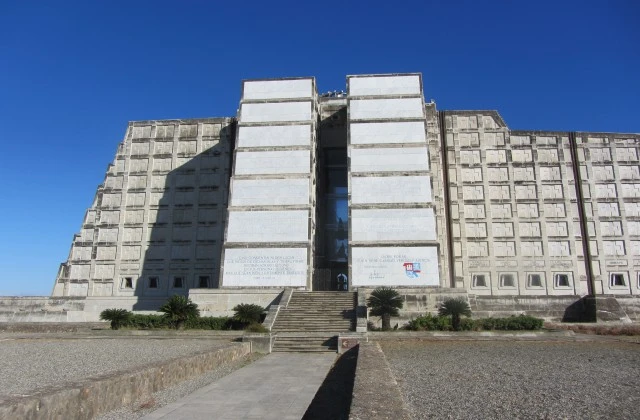
Le monument «Faro a Colón» inauguré le 6 octobre 1992 en hommage à Christophe Colomb, à Santo Domingo.
It is a gigantic lighthouse coupled with a mausoleum 210 m long and 59 m wide, estimated at $70 million dollars. This project was considered obscene by Dominicans at the time.
However, in Haiti, after the fall of dictator Jean-Claude Duvalier in 1986, the statue of Christopher Columbus at the Bicentennial was violently torn down.
To understand the way in which the Dominicans claim their belonging, we must also observe the exhibition of their heritage through their urban scenography.
By the end of the 19th century, the island’s economy led to a considerable drain of Haitian labor to the neighboring republic for work in the « bateyes ».
In 1992, sociologist Wilfredo Lozano estimated the number of Haitian workers working in agriculture at between 60,900 and 197,900.
Today, sugar cane ceases to be the pillar of the Dominican economy, in favor of more lucrative sectors such as: tourism, construction, the cultivation of citrus fruits, rice, coffee, etc.
Read also: Dominican coffee is starting to make its name. A good part of the production comes from Haiti.
In a 2020 study on the estimated demand for foreign workers in the construction and agricultural sectors, conducted by the National Institute of Migration (INM) of the Dominican Republic, Haitian workers numbered 88,264 in the construction sector, or 29.21% of the total workers.
With 111,867 workers, 28.15% of employees in the agricultural and livestock sector are Haitians. Haitians account for 9.54% in the hotel and restaurant sector.
The island’s economy led to a considerable drain of Haitian labor to the neighboring republic for work in the « bateyes ».
In 2022, according to data from the Center for Exports and Investments of the Dominican Republic (ProDominicana), Haiti represents the 2nd leading export partner of the Dominican Republic with $1,040 million dollars in manufactured products, intermediate goods, food, cement works, charcuterie, etc.
Meaning Haiti remains a vital market for the Dominican economy.
Furthermore, due to insecurity, thousands of Haitians, including artists, have crossed the border in recent years. They live in the neighboring republic and invest their money there. Dominicans also work in Haiti in certain industries such as construction.
From 2020 to 2021, Dominican universities received 105,021 Haitian students, according to the Dominican Republic’s Ministry of Education, which places Haiti at the top of the list of countries with the largest number of students in neighboring territory. Women from Haiti also travel to the DR to receive medical care. This subject is regularly exploited by the Dominican right.
If diplomatic conflicts persist, the entire island is threatened by major challenges such as: climate change, mining, corruption, insecurity, etc.
Read also: The exploitation of a gold mine on the border between Haiti and the DR is scary
In a recent report by a group of UN experts citing the criminal actions of various actors in Haiti, mention is made of the Dominican Republic as being a part of the illicit firearms trafficking route coming from the United States.
According to this report, a “large part of the trafficking goes under the radar,” unveiling the transnational dimension of the security issue on the entire island.
In a recent report by a group of UN experts […], the Dominican Republic is mentioned as being a part of the illicit firearms trafficking route coming from the United States.
On a cultural level, there are pretty dynamic exchanges between the two peoples.
“During the 1990s, until the early 2000s, Haiti participated in the Dominican carnival in floats. But that hasn’t existed for several years,” laments Edwin Paraison.
There are also collaborations between artists on both sides of the island.
Edwin Paraison is coordinator of the “Fundación Zile,” a binational organization working in cooperation with the two parts of the island, initiating “Diaspora Week” in 2011.
This friendly meeting between the two peoples focuses on around twenty activities in areas such as: sport, culture, education, etc.
The Haitian association Sol Scène has been operating in the cultural field since 2015. Through initiatives such as: “Haitian-Dominican Creation Meetings,” “Binational Artistic and Cultural Database,” its artistic director Daphné Ménard, intends to “create an opening between the Haitian and Dominican cultural sector. »
On a cultural level, there are pretty dynamic exchanges between the two peoples.
The “Caracoli” Association founded in 2007, working in the Haitian cultural environment, also undertakes capacity building initiatives, supervision of cultural organizations, as well as Binational dialogue in order to highlight the similarities of the island.
“The initial idea is to highlight the things that bring us together because the news is always oriented towards the differences between Haiti and the Dominican Republic,” relates Pascale Jaunay, director of the association.
This dialogue project aims to build links between artists from the island. He wants to set up a binational database, press exchanges, etc.
For Jaunay, “the idea is to put culture at the center of relationships.”
Despite the deterioration of relations between the two countries in recent years, the insular reality requires both sides to “make every possible effort to preserve good relations,” encourages Edwin Paraison.
Read also: Photos | Ouanaminthe: all in turmoil, all united to finalize the canal
If the complementary nature between the two economies essentially benefits the Dominican Republic, geographer Jean-Marie Théodat maintains that “we must reorient relations between the two States in a more peaceful and reciprocal direction.”
Smith Augustin, former Haitian ambassador to the Dominican Republic, for his part, thinks that it is not a question of “breaking ties, but of preserving them while defending Haiti’s interests.”
English translation by Sarah Jean.
Cover image : In Ouanaminthe, near the construction site of the canal, Dominican soldiers curiously observe a Haitian Vodou priest conducting a ceremony, lifting a duck in October 2023. | © Jean Feguens Regala/AyiboPost
Stay in touch with AyiboPost through :
► Our WhatsApp channel : click here
► Our WhatsApp Community : click here
► Our Telegram canal : click here

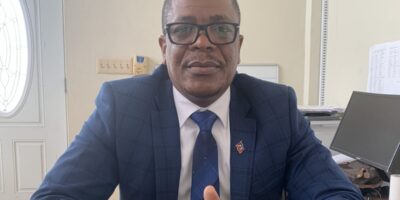
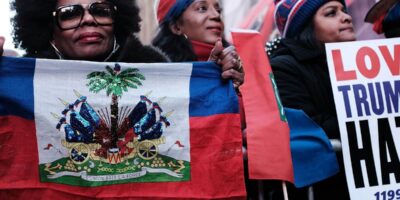
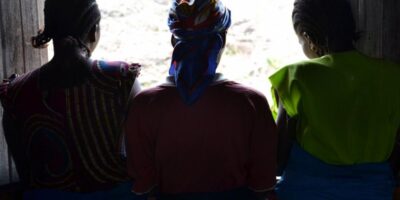
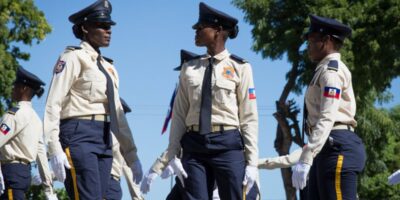


Comments